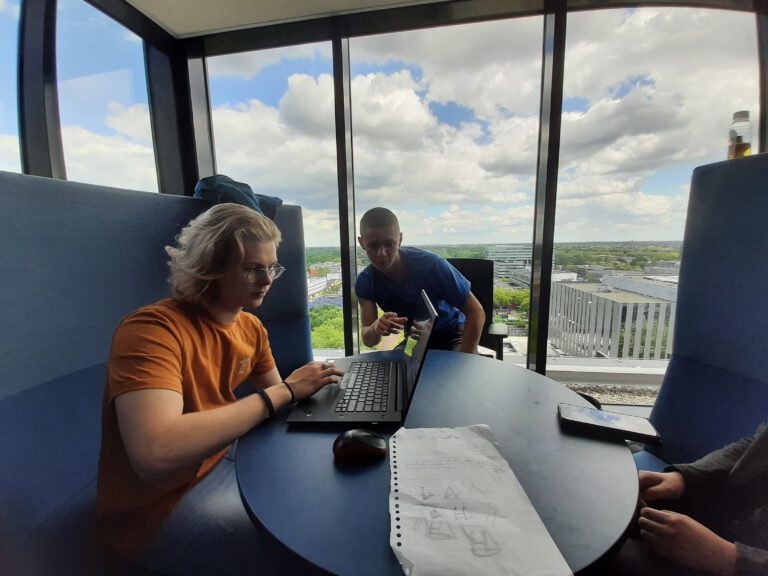Professional Identity
I am a creator. Both in professional and personal settings my life is filled with ideas that range from basic improvements on individual products to radical changes within societal systems. This is the drive and reasoning for the choices that have led me to Industrial Design. The way I express and funnel these ideas are the things I do to have an impact on my surroundings and myself: graphic design, music, writing, and now product- and system design.
As a designer, I take the shape of an enthusiastic leader who is all-in on every single project. Though I view every decision as a personal opportunity to drive a project forward, I find cultivating the conversation between me and others essential for reaching a satisfactory conclusion – the power of design is in combining different viewpoints and angles. Since I am quite a present and enthusiastic actor in especially the ideation phases of projects, it is one of my main pitfalls that my contributions outbalance those of others, since they might not match that initial enthusiasm. Another side-effect of this enthusiasm is that I tend to burn myself out at the start of projects, resulting in a tone change during the final ‘implementation and realisation’ phases later on.
My enthusiasm is also prevalent in my affinity to learn new skills. In the past, I’ve picked up tools like graphic design in software like Affinity Designer, 3D modelling in Solidworks (and printing on an amateur level), and video editing. These all contribute to my metaphorical toolkit, which I use to tackle an ever-growing variety of problems: variety helps me stay interested in projects. I lean more toward being a Jack-of-all-trades designer rather than one hyper-focused on one skill like 3D modelling.
To be in front of an audience and present my ideas is when all these qualities truly come to fruition. My immersion in projects makes it so that I am in comfortable environments where tough questions are asked. Feedback through audience participation brings me an eagerness to improve – the people I talk to could be future users.

Vision
Design on a consumer level is inherently flawed in society: it assumes that one product serves the same need for all of us. One size fits all. If one does not fit within this category of ‘all’, they simply must buy another product that does fulfil their wishes. Once a product breaks, one simply throws it away in its entirety. Consumerism at its core. For me, designing is finding lasting alternatives to solutions we currently ‘make due’ with.
Users should feel like the products they use in their everyday life are an extension of their natural capabilities rather than adjusting to the conformities of that product to get to their goals. This leads to a balance between two values that are intrinsic to achieving this:
- Intuitiveness – New users should be able to use a design from square one, with minimalism and organic form as a foundation for communicating its most basic functionalities.
- Mastery – With customizability through modular design, a personalised experience leads to a user getting exactly what they want from a design, be that on a digital or physical level.
The right balance leads to a learning curve: easy to pick up, rewarding to master. Incorporating users into the design process through continuous user studies, focus groups and other evaluation methods assures these values are actually being met. The primary scope of this philosophy is catering to simple life pleasures and ease of everyday life through physical products. Ranging from basic utility items like [holepunchers] to system-based objects like [OV-chip terminals], it is apparent my vision cannot be defined to a single environment. By working with modular design, a base package can be catered to the most basic functionality, with potential expansions leading to that personal level.